In pursuit of a harmonious, fit, and harmonious body, people start exercising and following a healthy diet. The first problem to face is diet. Few people know that the problem lies in the overconsumption of simple carbohydrates. Once they researched information from popular sources and didn't read it through, they completely eliminated carbohydrates from their diets. Malfunctions, health issues, loss of strength, etc. start from here. Where is the balance and truth? very close! Let's figure it out.
People's thinking about why they gain weight has changed dramatically over the past few years. The general public has realized that carbohydrates, not dietary fats, are converted into subcutaneous fat and become one of the leading causes of obesity.
Low-fat diets have long been the foundation of weight loss methods, but it's the low-carb diets that have really made a splash, which have a great effect on losing excess pounds. Research shows that simple and complex carbohydrates have different effects on the body. Excessive consumption of foods high in carbohydrates can lead to excess weight.
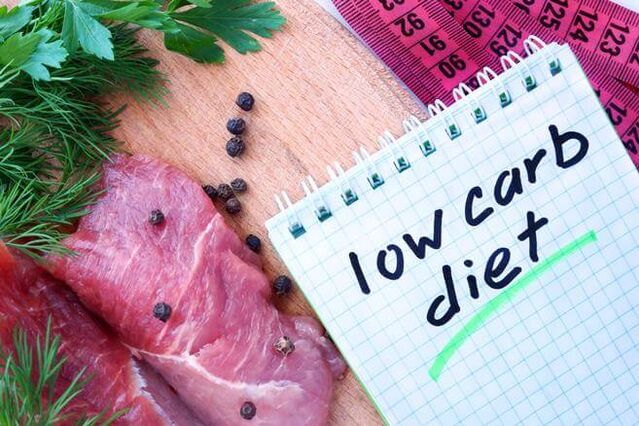
In this article, you will learn:
- What is a low-carb diet and how fat burning happens;
- The advantages and disadvantages of this method;
- what foods are included in a low-carb diet;
- Full menu of fun low carb recipes.
What is the essence of the weight loss method
Carbohydrates provide the body with the necessary energy for important processes and physical activities during the day. A complete rejection of macronutrients will result in malfunctioning of the functional system, and excess energy received will result in increased fat reserves. Low-carb diets include slow (complex) carbohydrates that don't cause a sharp spike in blood sugar and take longer to convert into energy.
The essence of this approach is to consume less carbohydrates and more protein each day from the first day of a safe and effective weight loss diet. Therefore, the following process is initiated in the main body:
- The previously received energy is in short supply, forcing us to find new sources.
- Glycogen in the first 2-3 days of the diet becomes the main energy provider.
- Additionally, fats are broken down to synthesize an additional source of energy - ketones.
Studies comparing the benefits of low-carb and low-fat diets for weight loss have shown that people who minimized their carbohydrate intake lost more weight in 6 months than those who followed a low-fat diet.
On a low-carb diet, subjects felt full after eating because protein and fat were broken down more slowly than carbohydrates. In addition, blood sugar and insulin production gradually increased. This means they don't have a sudden burst of energy, but instead feel tired and hungry.
in conclusion: The principle of the diet is to promote the biochemical processes of fat burning and additional weight loss.
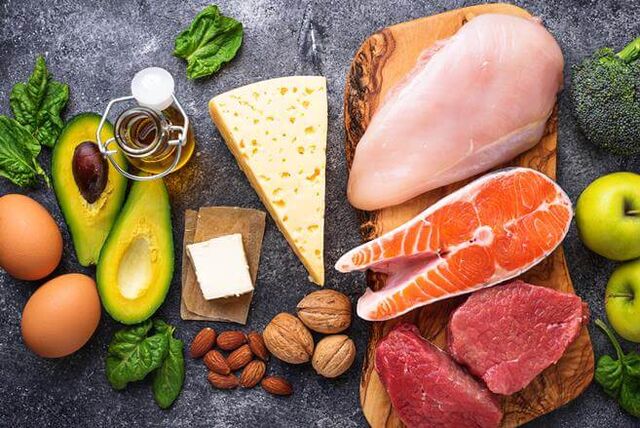
It is important to remember that during a diet, the fat layer is reduced evenly throughout the body, so it is not possible to reduce the volume locally.
advantages and disadvantages
The low carbohydrate content in the menu is beneficial to the state of the body, normalizing digestion, increasing metabolic processes and rejuvenating.
advantage:
- There is no hunger in eating, strength remains at the same level, no weakness;
- suitable for diabetics;
- For the purpose of losing weight, suitable nutrition for men and women;
- Suitable for low, medium and high activity levels;
- The calculation of daily caloric requirements for weight loss did not require significant changes, with changes in the indicators of protein and carbohydrates.
Reducing the amount of macronutrients can help with weight loss and improved health and is recommended for:
- overweight;
- intensive training;
- diabetes;
- hypertension;
- endocrine system diseases;
- tumor disease.
The method has gained confidence in athletes and bodybuilders - a reliable opportunity to gain relief, reduce subcutaneous fat percentage and maintain muscle mass.
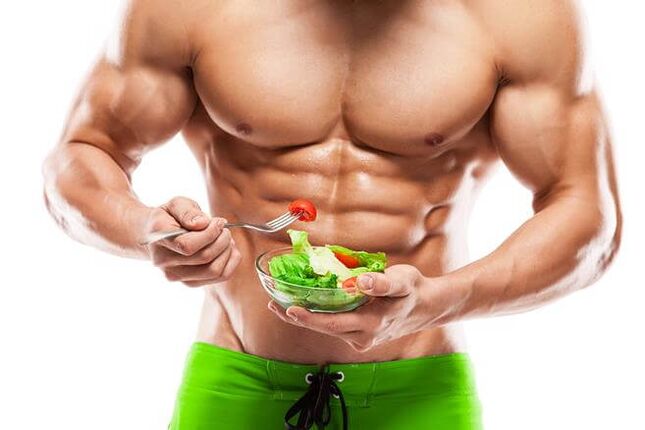
However, this diet has its drawbacks:
- Constipation – The loss of fiber associated with reduced carbohydrate intake can lead to digestive problems;
- Carb starvation can cause headaches, irritability, and nervousness;
- exacerbation of chronic disease;
- increase the burden on the liver;
- Potassium and sodium are in short supply;
- Carbohydrate deficiencies reduce concentration, which is essential for people who do mental work;
- The development of diseases of the cardiovascular system due to elevated cholesterol levels caused by a large number of animal products;
A low-carb diet isn't on the list of ways you can follow for years because large amounts of banned foods can put extra stress on the body. So, after weeks or months of restriction, a person reverts to their usual eating habits again.
Balance of protein, fat and carbohydrates
The main sources of protein in a low-carb diet are animal products: meat, poultry, offal, cottage cheese, eggs. For vegetarians, beans and nuts are another option.
The proportion of BJU in the diet is:
- Protein 40-50%;
- Fat 30-35%;
- Carbohydrates 20-25%.
Nutritionist's opinion
Nutritionists are wary of this approach because a low-carb diet (for a week or a month) means using 50-70 grams of macronutrients per day. Deficiency can lead to undesirable diseases with many side effects such as excess.
Doctors recommend prioritizing proper and balanced nutrition and controlling carbohydrate intake. A healthy diet combined with physical activity will help reduce the amount of body fat - an approach that can't be blamed for weight loss, but doesn't harm health.
Contraindications
You should consult your doctor before "dieting" because high protein foods are contraindicated in people with impaired metabolism (eg, urolithiasis, gout).
The truth is that with a normal diet, these metabolic disturbances may not manifest, meaning you may not even know you have the disease. By changing your diet in the direction of increasing your protein intake, you trigger a serious pathology in your body.
Gastrointestinal diseases (cholecystitis, pancreatitis, cholelithiasis, gastric ulcer, gastritis) prohibit excessive consumption of fatty foods. Fatty foods can cause the body to consume large amounts of cholesterol, which can lead to or accelerate the growth of atherosclerotic plaques.

Weight loss methods are also not recommended:
- pregnancy and lactation;
- persons under the age of 18;
- have cardiovascular disease;
- when chronic diseases are exacerbated.
Basic Rules of a Low-Carb Diet
This method involves using the minimum amount of carbohydrates that are sufficient to keep the body working. Women need 2 grams per kilogram of body weight and men 3 grams. If the daily intake is 120-150 grams, then in order to lose weight, this number is gradually reduced to 50-70 grams per day. Protein foods become a substitute for energy sources and maintain muscle tone.
A low-carb diet lowers insulin levels, which suppress appetite. Ketone bodies from animal and plant proteins and fats block the flow of information about hunger.
Following some principles will help you achieve your goals:
- Exclude products with a high glycemic index from the diet;
- take extra vitamins and minerals;
- The preferred cooking methods are braising, boiling, roasting, steaming. No oil or a small amount of fried material;
- Don't skip meals, don't cut calories;
- Take out complex carbohydrates in the first half and before training, in the second half - protein foods;
- must have breakfast
- Follow the drinking protocol: at least 2 liters of clean liquid.

Don't forget, correctly calculating your daily energy requirements for weight loss is the first step before starting any diet.
Approved product
The list of products for maintaining a low-carb diet is extensive, diversifying the menu and won't leave you starving. It is important to research information about ingredients using food calorie tables or labels.
Allow product table
Diet implies certain restrictions. With the help of the table, you can familiarize yourself with products suitable for low-carb nutrition.
Product Group |
Approved Products |
|---|---|
Meat |
Lean pork, veal and beef, poultry, offal |
fish and seafood |
Marine Fish: Salmon, Salmon, Cod, Mackerel, Herring, Tuna, Halibut Seafood - no restrictions |
dairy products |
cottage cheese, cheese, kefir, natural yogurt without additives - low in fat |
Egg |
Chicken and Quail |
Vegetables, raw and canned |
Everything except high starch vegetables: potatoes, Jerusalem artichokes, sweet potatoes |
mushroom |
without any restrictions |
fruits, berries |
Citrus, green unsweetened apples |
cereals |
Long-cooked oatmeal, brown rice, and buckwheat |
Nuts and Seeds |
Boundless and boundless |
Oil |
unrefined vegetables |
sauce |
balsamic vinegar |
sweetener |
Sorbitol and fructose free |
drinks |
Coffee, Tea - Unsweetened, Mineral Water, Vegetable Juice |
Contraband
If your favorite product isn't on the allowed ingredients list, chances are it's on the prohibited list:
- bakery and confectionary products;
- Processed grains (white rice, instant oatmeal, semolina), high-quality wheat pasta;
- potatoes, corn;
- Semi-finished products, smoked products;
- Food ingredients (mayonnaise, ketchup and sauces, excluding soy);
- chocolate;
- sweet fruits (bananas, grapes);
- sugar and sugar products;
- Packaged fruit juices, juice drinks (due to added sugar);
- soda;
- Alcoholic beverages.
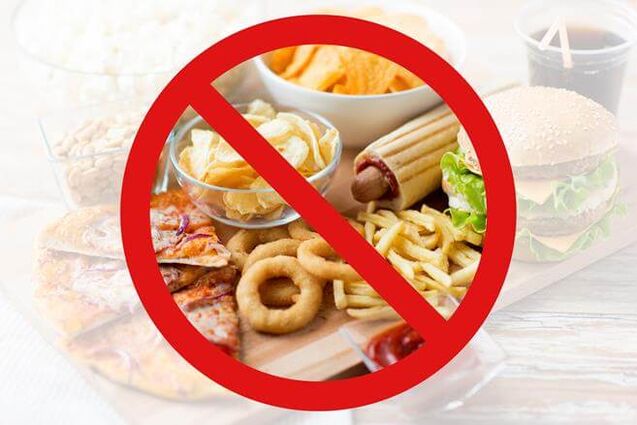
It is necessary to give up the above products for the first time, and gradually reintroduce them into the diet in small portions after 3-4 weeks.
Sample menu of the week
At first glance, a low-carb diet may not seem very varied, but by preparing your menu a week in advance, you can ensure that your diet is saturated.
Table: Sample 7-Day Low-Carb Diet Menu
The table contains possible combinations of breakfast, lunch and dinner that can be used as a base and replaced with your favorite meal. Don't forget that it is important to correctly calculate the calorie content of the finished dish to meet the daily energy intake. Alternation and repetition of products is possible.
sky |
breakfast |
second breakfast |
dinner |
afternoon tea |
dinner |
|---|---|---|---|---|---|
1 day |
Sugar Free Cheese Casserole + Tomato/Cucumber |
grapefruit |
Vegetable Brown Rice Porridge |
Kefir 1% |
Steamed Fish + Coleslaw + Bread |
2 days |
Scrambled or two egg omelet + chicken |
non-fat cheese |
Mushroom Soup with Low Fat Sour Cream + Bread |
1% kefir with chopped cucumber and herbs |
Boiled Beef + Cucumber Tomato Salad |
3 days |
Cheese Stewed Vegetables |
apple |
Chicken Soup Vegetable Soup |
Milk 1. 5% |
Boiled Breast + Stewed Cabbage |
Day 4 |
Oatmeal with Grated Apple |
grapefruit |
Buckwheat Porridge + Beetroot Salad |
non-fat cheese |
Veal or Chicken Stew with Vegetables |
Day 5 |
cheese + boiled egg |
apple |
boiled brown rice + seafood |
Kefir 1% |
green salad + lean steak |
Day 6 |
cheese + boiled egg + bread |
Natural unsweetened yogurt 1. 5% |
Grilled Meat + Vegetable Salad |
Kiwi |
Stew + Boiled Fish |
Day 7 |
Milk Buckwheat Porridge |
non-fat cheese |
Grilled Fish with Vegetables |
Kefir 1% |
Grilled Breast + Fresh Vegetables & Herbs |
Long-term low-carb diets (from 30 days onwards) should include cheat meals or refeeds to avoid slowing metabolism.
get rid of diet
Low-carb diets are effective and affordable, but after 2 months you need to return to a normal diet. Gradual withdrawal is to minimize stress on the body, not to return previously lost kilos.
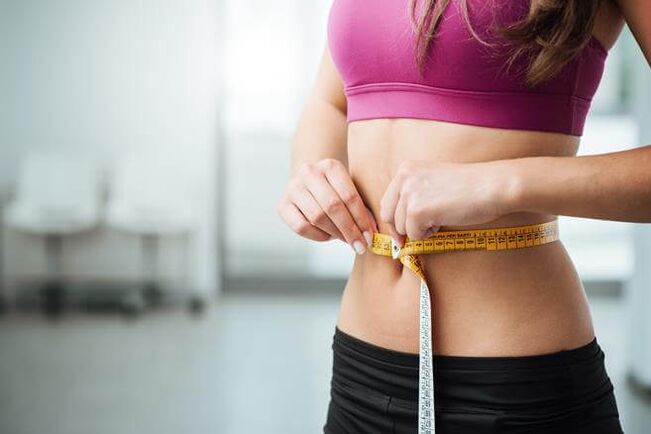
Return to a normal diet within 3-4 weeks:
- Increased amounts of fruits and vegetables (without starch) during the first and second weeks;
- Week 3 - Reduce protein foods by adding grains;
- The number of calories is also increasing every day.
What to do during weight loss - delicious recipes
A low-carb diet isn't a reason to eat just chicken tenders. The list of allowed products is extensive, so you can create tried-and-true dishes or fantasies based on the ingredients available.
Chicken Tenderloin in the Slow Cooker
Recipe #1
cooking method:
- Wash the chicken fillets to remove excess fat. Cut into any pieces, sprinkle with salt and spices, and place in the bottom of the multipurpose pot.
- Pour in the water and add the bay leaves.
- Cook for 1. 5 hours in "Fire Out" mode.
Total Carbs: 0 grams
raw material:
- Chicken fillet - 250 g;
- water - 150 g;
- salt, pepper - to taste;
- Bay Leaf - 1 pc.
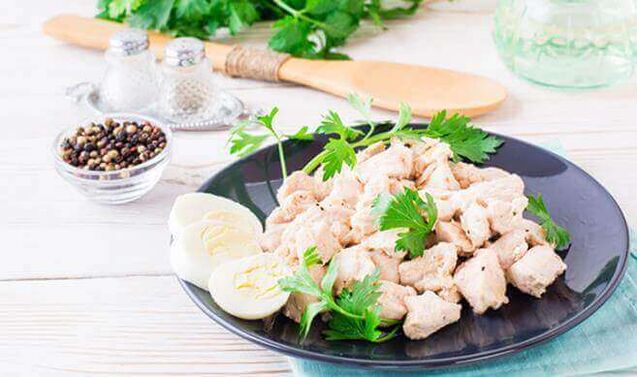
Veal with cheese in the oven
Recipe #2
cooking method:
- Rinse the meat in cold water, cut lengthwise, and knock out.
- Grease a baking sheet, place the veal and pour in the milk.
- Transfer to an oven preheated to 180 degrees for 40 minutes.
- Next, salt the meat and season with salt and spices.
- Slice the cheese, spread evenly over the meat, and return to the oven for 30 minutes.
Total Carbs: 7. 7 g
raw material:
- Veal shoulder - 400 g;
- cheese - 100 g;
- Milk 1. 5% - 100 ml;
- vegetable oil - 20 ml;
- Salt, pepper, spices - to taste.
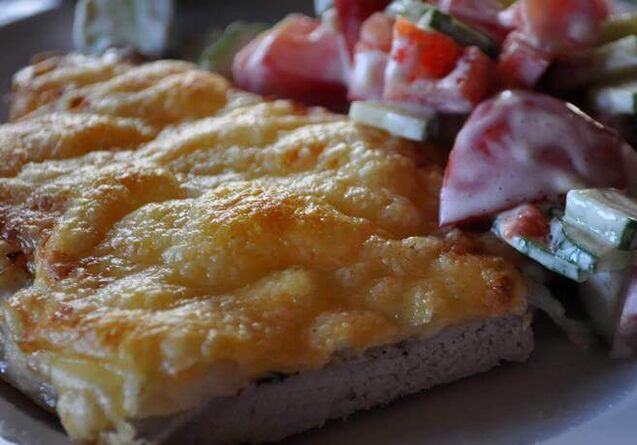
Oat Bran Soup
Recipe #3
cooking method:
- Cut turkey fillets into cubes and boil in 1 liter of water for 20 minutes.
- Finally, add the chopped onion and bran.
- Boil the eggs, cut into small pieces and add to the broth.
- Chop the greens and add to the soup.
Total Carbs: 24 grams
raw material:
- Turkey fillet - 150 g;
- water - 1 l;
- onion - 60 g;
- eggs - 58 grams;
- Oat bran - 25 g;
- Chopped dill - 10 g;
- green onions - 5 g;
- Salt, pepper - to taste.
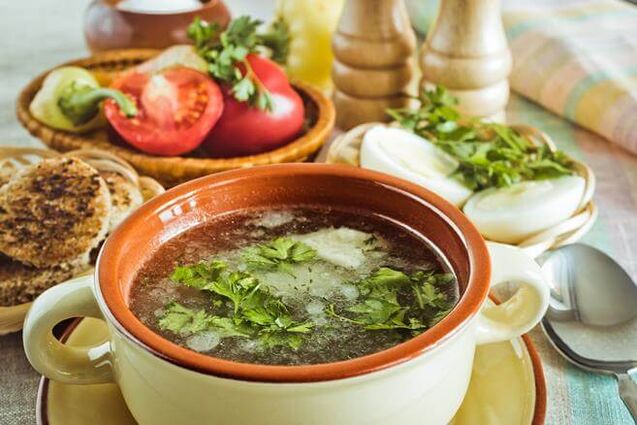
Chinese Cabbage Salad with Fruit
Recipe #4
cooking method:
- Peel the orange from the peel and remove the white layer.
- Cut the fruit into cubes.
- Finely chop cabbage and onion. Combine all ingredients.
- Season salad with salt, season with lemon juice, and mix.
Total Carbs: 16. 5 g
raw material:
- Chinese cabbage - 150 g;
- Apple - 50 g;
- orange - 60 g;
- green onions - 5 g;
- lemon juice - 20 ml;
- Salt - to taste.
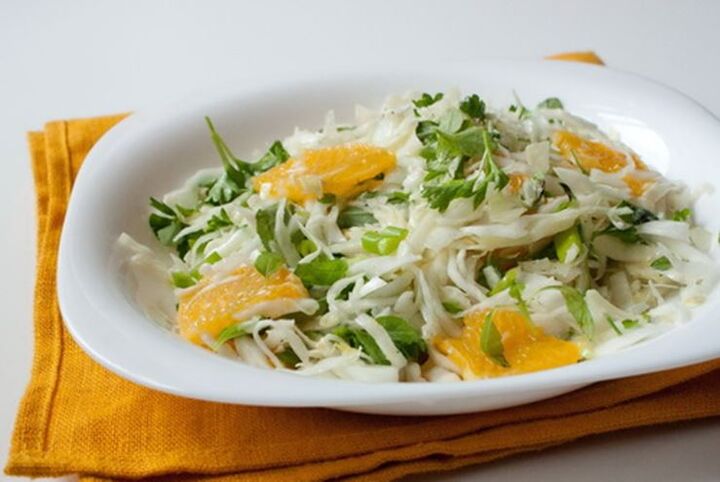
Squid Salad
Recipe No. 5
cooking method:
- Boil two eggs and peel them. Cut into medium cubes.
- Rinse the squid carcass, peel and innards, soak in boiling water for 15-20 seconds, don't use it again! Otherwise, they will be "rubbers".
- Cut seafood into thin rings or strips.
- Cut the cucumber into thin strips.
- Mix all ingredients.
- Dress salad with juice and olive oil, and mix.
Total carbohydrates: 3. 5 g.
raw material:
- Eggs - 116 g (2);
- squid - 150 grams;
- cucumber - 70 g;
- lemon juice - 15 ml;
- Olive Oil - 15 ml.
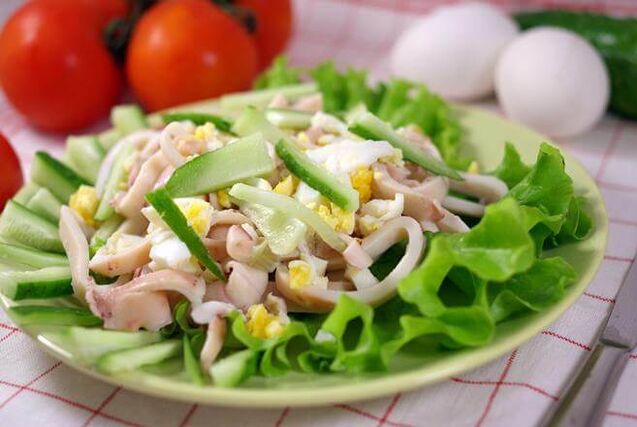
White fish with vegetables
Recipe #6
cooking method:
- Rinse the fish and remove the fins. Cut into medium size and rub with salt and pepper.
- Roughly chop vegetables.
- Spread all ingredients evenly on the baking sheet.
- Bake in a preheated oven at 180 degrees for 50-60 minutes.
Total Carbs: 8. 7 g
raw material:
- cod - 500 grams;
- eggplant - 80 g;
- tomatoes - 120 g;
- pepper, salt.
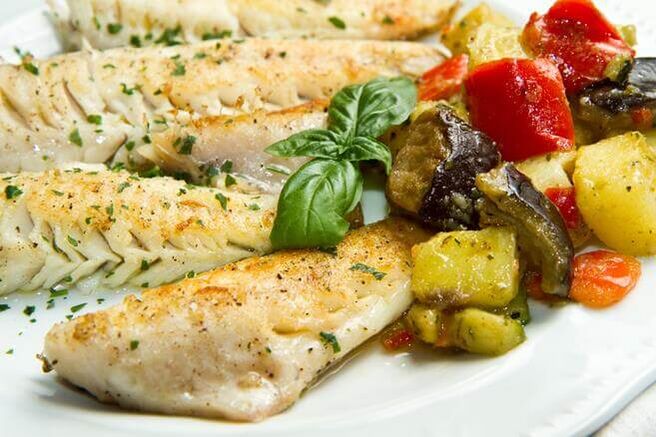
Cheese Soup
Recipe No. 7
cooking method:
- Cook the chicken tenders until tender, remove the meat and let cool. Cut into medium-sized pieces.
- Grate cheese on a coarse grater, add to broth, and simmer for 20 minutes until an even consistency is obtained, stirring constantly. Add salt and pepper to taste.
- Coat chicken fillets in each serving. Decorate with greenery.
raw material:
- Chicken fillet - 300 g;
- Processed cheese - 100 g;
- water - 1. 5 l;
- salt, pepper - to taste;
- Fresh herbs - to taste.
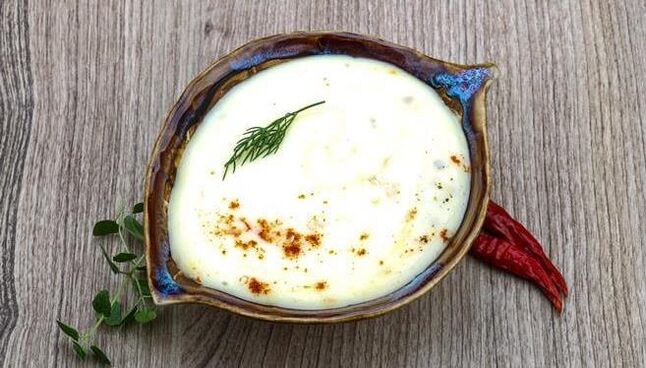
milk dessert
Recipe No. 8
cooking method:
- Pour the milk into a darker form and whip it in the refrigerator until frozen.
- Pour the gelatin sheets into the water, cook according to the directions, and add the gelatin sheets. cool down.
- Take out the milk, beat with a submersible blender, pour in the gelatin and continue to beat.
- Move to refrigerator for 20 minutes.
Total Carbs: 9. 9 g
raw material:
- Milk 0. 5% - 200ml;
- Gelatin - 10 g;
- water - 40 ml;
- Sweeteners - to taste.
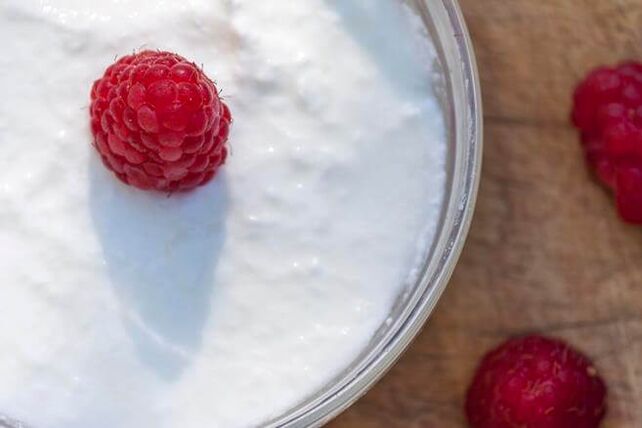
Canned Tuna Salad
Recipe #9
cooking method:
- Cut the onion into half rings, pour over the vinegar, mix and let stand for 15 minutes. After draining excess fluid.
- Boil hard-boiled eggs and grated cheese on a coarse grater.
- Cut cucumbers into strips.
- If the tuna is too large, mash it up with a fork.
- Combine all ingredients, season with oil and season with salt and pepper.
Total Carbs: 7. 5 g
raw material:
- Canned tuna - 1 can, about 180 grams;
- eggs - 58 grams;
- hard cheese - 100 g;
- cucumber - 100 g;
- onion - 40 g;
- vinegar - 5 ml;
- olive oil - 15 ml;
- Salt, pepper - to taste.
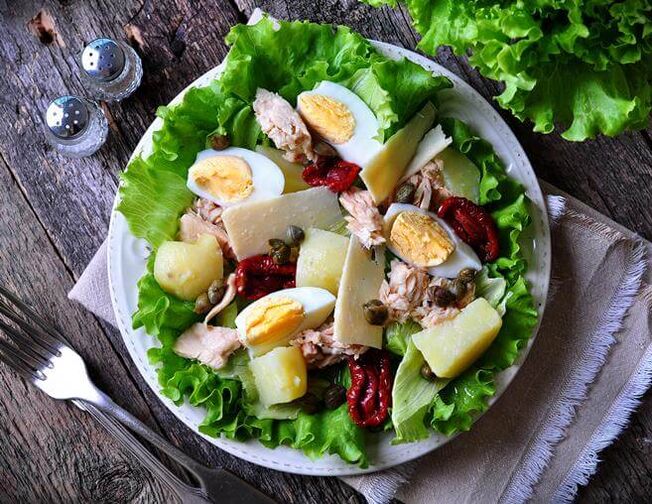
Weight Loss Meatloaf
recipe number 10
cooking method:
- Rinse all types of meat, dry with paper towels, and chop or shred in a blender/meat grinder.
- Cut the onion into small cubes.
- Add eggs, onion, salt and spices to the minced meat. Mix well and use wet hands to form a pie.
- Steam for 20-30 minutes or fry in a non-stick pan without oil on both sides.
Total carbohydrates: 7 grams.
raw material:
- Beef shoulder - 200 g;
- lean pork - 400 grams;
- Chicken fillet - 250 g;
- onion - 60 g;
- eggs - 58 grams;
- Salt, spices - to taste.
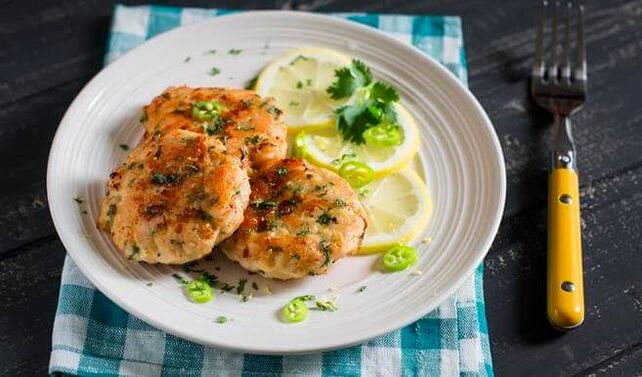
low carb raphael
Recipe #11
cooking method:
- Curds must be dry. Grind a portion of the cottage cheese with the sweetener through a sieve, add the sour cream, and mix.
- Dry the almonds in a hot nonstick pan for 7-10 minutes, stirring constantly.
- Blindfold a dollop of cottage cheese, flatten it, place an almond in it, and roll into a ball.
- Roll finished candy into coconut flakes and refrigerate for 1 hour.
Total Carbs: 28. 1 g
raw material:
- cottage cheese 1. 8% - 250 g;
- 10% - 40 g sour cream;
- raw almonds - 20 grams;
- Coconut flakes - 100 g;
- Sweeteners - to taste.
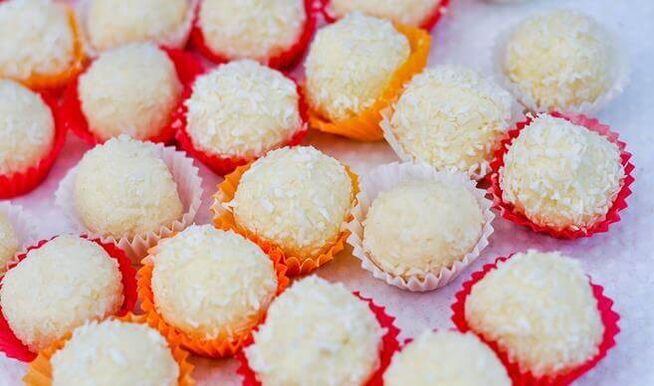
A low-carb diet is an effective way to lose weight, and the menu is varied. By following these tips, you can achieve the desired results quickly, and you won't have to worry about losing weight after leaving the low-carb regimen. Study the contraindications carefully, track your health and stay healthy!













































